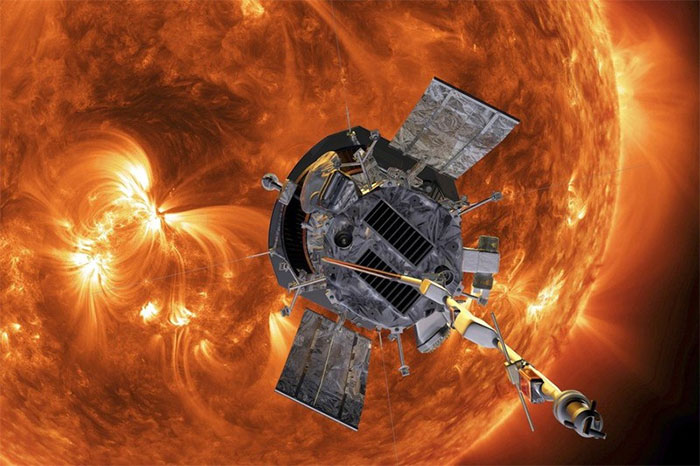A spacecraft from the National Aeronautics and Space Administration (NASA) has officially “touched” the Sun as it flew through an unexplored region of the atmosphere known as the solar corona, according to the South China Morning Post.
This information was announced by scientists on December 15 during a meeting of the American Geophysical Union (AGU). The Parker Solar Probe spacecraft flew through the corona in April during its eighth approach to the Sun.
Scientists indicated that for the first time, the spacecraft passed through the corona and approached the Sun’s center at a distance of about 13 million kilometers. The spacecraft moved in and out of the solar corona at least three times, and this process was relatively smooth.
However, scientists noted that it would take several months for the data from the spacecraft to be transmitted back to Earth, and it would take additional months to confirm the results.

NASA’s Parker Solar Probe spacecraft flying towards the Sun. (Photo: NASA).
Scientist Justin Kasper from the University of Michigan emphasized that the Parker Probe is moving very quickly at a speed of about 100 kilometers per second.
According to scientist Nour Raouafi from Johns Hopkins University, the solar corona appears to be dustier than scientists had predicted. He stated that future space explorations will help scientists better understand the origins of solar wind and how it is heated and expands into space.
He explained that due to the Sun’s lack of a solid surface, the corona is where the spacecraft operates. Close exploration of this area will help scientists gain a better understanding of the issues the Sun may cause for Earth in the future.
Preliminary data also indicates that the spacecraft entered the solar corona during its ninth approach in August and its tenth approach last month, but scientists stated that further data analysis is needed to confirm these findings.
The Parker Probe was launched into space in 2018 and will continue to get closer to the Sun until it completes its mission in 2025.


















































